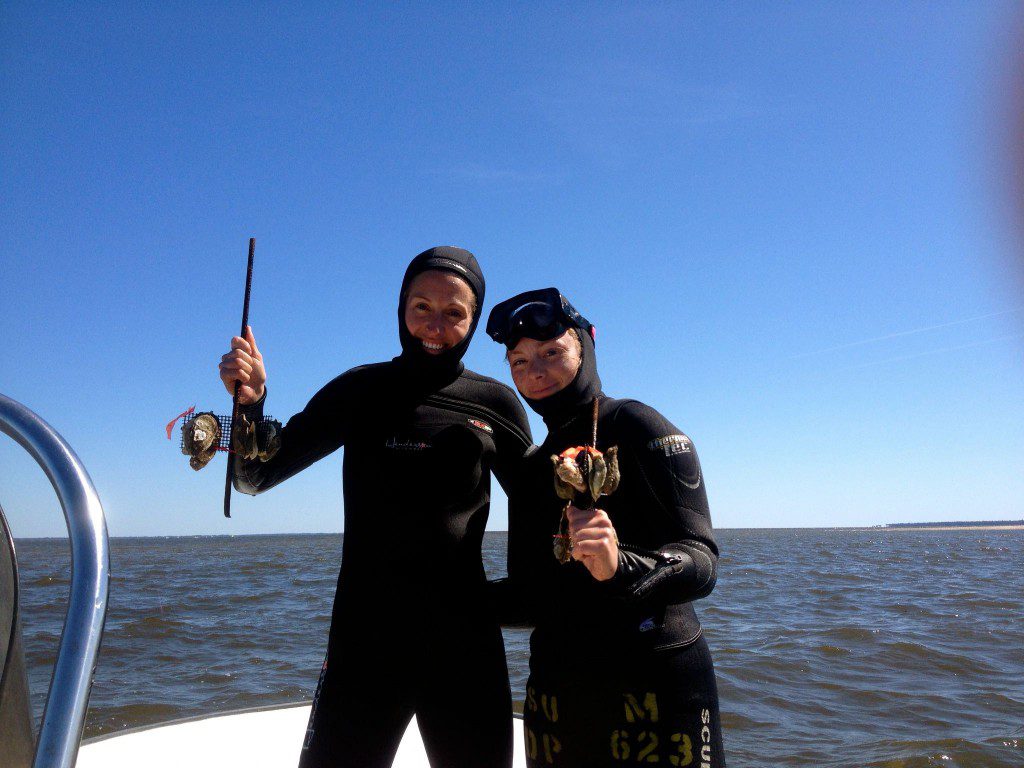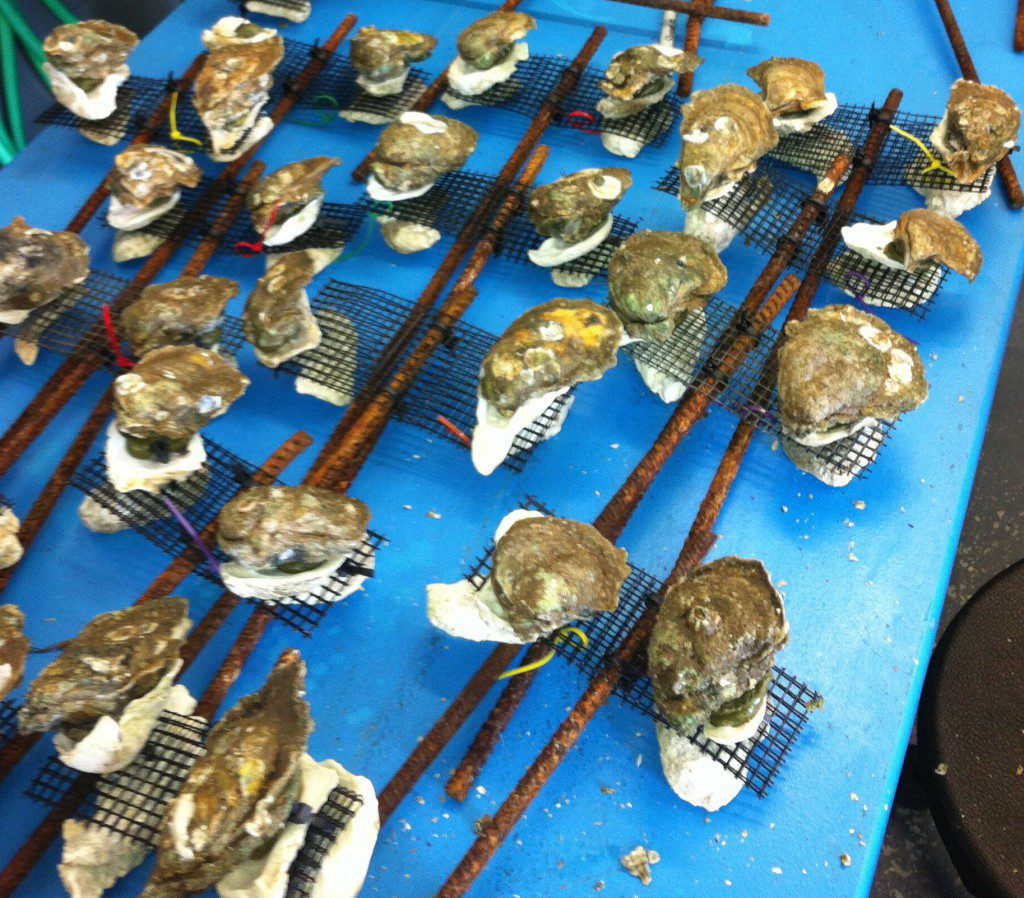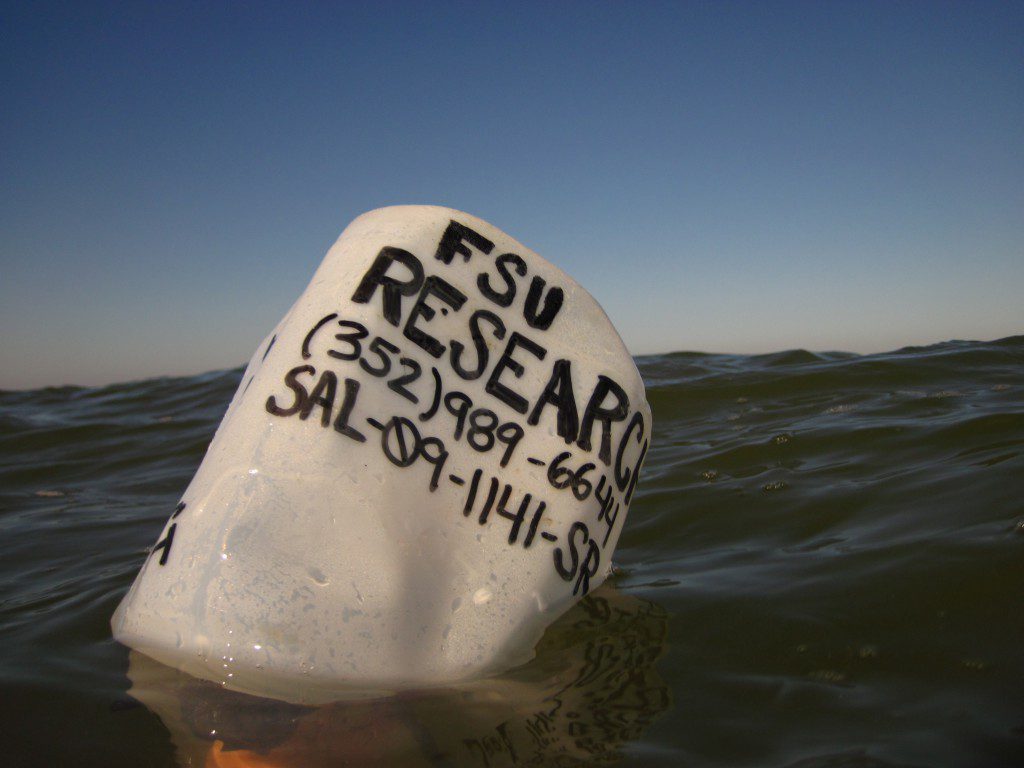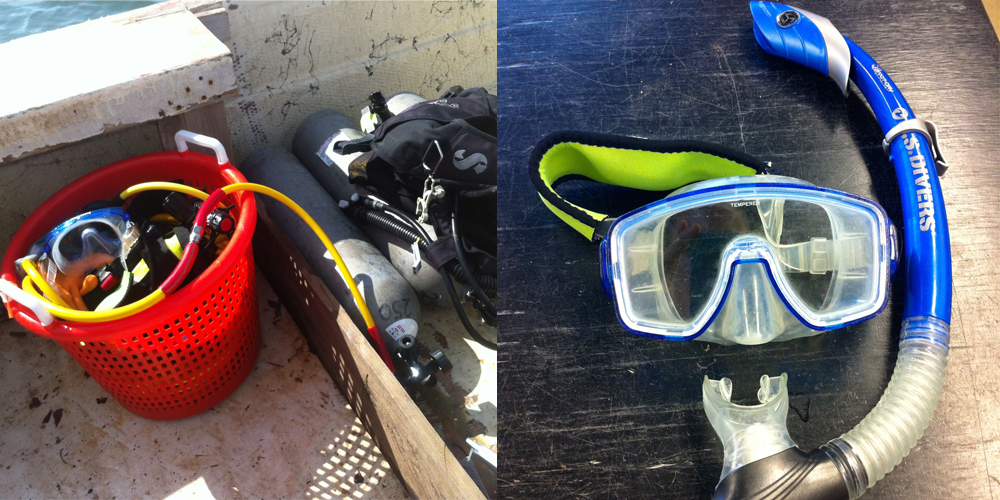Waves and wind can make an underwater experiment challenging. But in Apalachicola Bay, it’s getting to where getting enough oysters to run an experiment is a challenge in itself. On Dimensions tonight (Wednesday, May 8 at 7:30 PM/ ET), get an inside look into what it’s like to go oystering during the oyster fishery crisis. We look at the men and women fighting for the bay, and the evolving alliance between those who work the bay, and those who would study it.
Hanna Garland FSU Coastal & Marine Lab
 Growing up, I always loved to help my dad with the never-ending list of house and boat projects, but because being a perfectionist is not one of my attributes, it would bother me when he would remind me to “measure twice, cut once.” However, whether taken literally or figuratively, this saying has had more relevance as I have progressed through college and now my graduate career. Take for example: the Apalachicola Bay oyster experiment.
Growing up, I always loved to help my dad with the never-ending list of house and boat projects, but because being a perfectionist is not one of my attributes, it would bother me when he would remind me to “measure twice, cut once.” However, whether taken literally or figuratively, this saying has had more relevance as I have progressed through college and now my graduate career. Take for example: the Apalachicola Bay oyster experiment.
In January, we conducted habitat surveys in order to assess the condition of oyster reefs throughout Apalachicola Bay by quantifying the oysters themselves as well as the resident crustacean and invertebrate species. We found some interesting patterns, but this survey data is just a “snapshot” in time of the oyster reef communities, so we designed an experiment that will investigate the survivorship and growth of market-size oysters in the presence or absence of predators at 12 reefs across the bay.
 Mimicking the design of most of the oyster experiments in the Hugbro lab, we continue to keep the marine epoxy, mesh, and rebar companies in business by securing oysters into predator-exposed or predator-excluded treatments and then installing them onto reefs. While the habitat surveys were conducted via scuba diving (or sometimes walking because the reefs were so shallow!), we decided to give our free-diving skills a test for the oyster experiment installation in order to reduce gear and research costs. Being primarily intertidal researchers we are not accustomed to all of the logistics for subtidal research, but free diving is mostly a mind game, right?
Mimicking the design of most of the oyster experiments in the Hugbro lab, we continue to keep the marine epoxy, mesh, and rebar companies in business by securing oysters into predator-exposed or predator-excluded treatments and then installing them onto reefs. While the habitat surveys were conducted via scuba diving (or sometimes walking because the reefs were so shallow!), we decided to give our free-diving skills a test for the oyster experiment installation in order to reduce gear and research costs. Being primarily intertidal researchers we are not accustomed to all of the logistics for subtidal research, but free diving is mostly a mind game, right?
Wrong! Meagan and I were reminded that we will never be greater than Mother Nature or “the elements.” We were only able to install the experiment on 10 of the 12 reefs throughout the bay and due to unfavorable weather conditions and diving logistics, we were unable to complete the installation on the remaining 2 reefs or check the status of the oysters that had already been deployed. As a result, we will be restarting this experiment in May, but this time via scuba and with learned knowledge and experience of working in the bay, which will allow us to obtain a more complete and accurate experimental data set.

These buoys mark experiment sites. Having the experiments submerged makes it otherwise invisible to passing boats and their propellors, and to oystermen and their tongs.
As frustrating as it may be to re-do the experiment, I was reminded at the recent Oyster Task Force meeting in Apalachicola, that the answer to the oyster crisis is going to take time; and in order to identify and quantify the environmental or biological stressors in the bay, research and management must be done correctly and entirely. So stay tuned, as there will need to be a lot more “measuring twice and cutting once” before we will be able to identify the key explanatory variables causing the loss of oyster habitat in Apalachicola Bay!
Music in the video by Nekronomikon Quartett.
In the Grass, On the Reef is funded by a grant from the National Science Foundation.


2 comments
[…] Donate Skip to content HomeThe ScienceThe “In the Grass, On the Reef” Master PlanCoastal Habitat Quick DictionarySalt MarshIn the Grass- Salt Marsh Biodiversity StudyMeet the Species “In the Grass”Oyster ReefOn the Reef- The Biogeographic Oyster StudyMeet the Species “On (and swimming around) the Reef”Watch Oysters GrowJacksonvilleSaint AugustineAlligator HarborSeagrass BedPredatory Snails, and Prey, of Bay Mouth BarIn the Grass, On the Reef DocumentaryEcoAdventures North FloridaEcoAdventures HomeActivitiesPaddlingHikingBird/ Wildlife WatchingArt/ PhotographyHistory/ ArcheologyApalachicola River and Bay Basin ← Notes From the Field, Apalachicola: Measure Twice, Cut Once […]
[…] looking at the overall health of oysters and the presence of predators. They followed this up with an experiment meant to monitor oyster health and predator effects over time. Many of their experimental cages […]
Comments are closed.